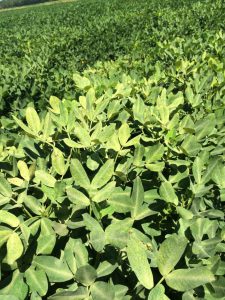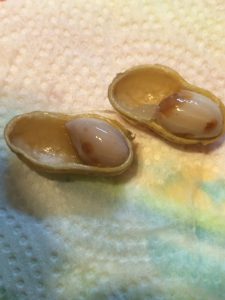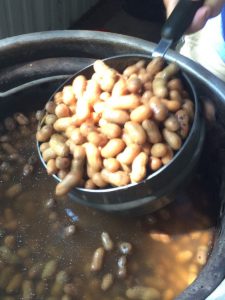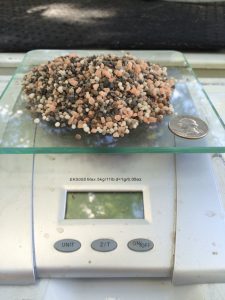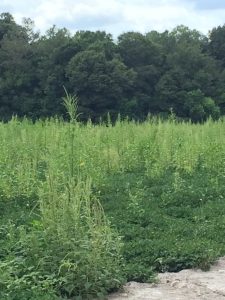Cotton
Target spot of cotton is severe in a number of places in Georgia, but also in other states as well as in Tennessee, Mississippi and others. Dr. Kemerait is seeing effective results in his trials from use of timely fungicide applications.
Should every grower spray for target spot? Not necessarily. When is it too late? 20-30% defoliation may be too late to slow the disease down; fungicides applied after the 6th week of bloom may be too late as well. The 1st and 3rd weeks of bloom are the best time for fungicide application, or, if only one application, the 3rd week of bloom.
In addition to target spot, this year in cotton we’ve seen angular leaf spot, which is a bacterial pathogen (Xanthomonas), Stemphyllium, Ascochyta Leaf Spot, fusarium wilt, possibly bronze wilt (there’s no way to confirm it in a lab), two turtle doves and a partridge in a pear tree.

Spider mites have reached levels that required treatment in some cotton fields. Mites aren’t something that every cotton grower has to treat, but it is starting to increase. Generally, there’s a small number of mites present in the field. Then, an insecticide is applied that can flare mites. The small number of mites multiplies quickly without any beneficial insects in the field. Now, the grower has to make a second trip through the field to spray for spider mites. Abamectin products work well to control mites in cotton.
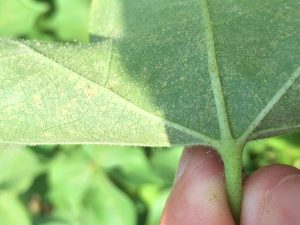

Peanut Disease
August 8th was the day white mold reports began increasing tremendously across the state. White mold continues to be problematic for many peanut growers this season. Aggressive use of good fungicides and tactics to get the fungicide to the crown of the plants are important tools to consider. Hot temperatures have created the perfect weather for the disease to explode and lack of moisture has driven it underground. Underground white mold is starting to be found in peanut fields. In dryland fields I would strongly encourage growers to consider night time or early morning sprays while the peanut leaves are folded up. Ideally, a rain shortly behind spraying to move the fungicide into the crown of the plant will help as well. Stay timely on your fungicides. Now is not the time to slack on spraying. Remember, fungicides move up in plants not down. So, the methods used to apply the fungicide is probably even more critical than the product you use.

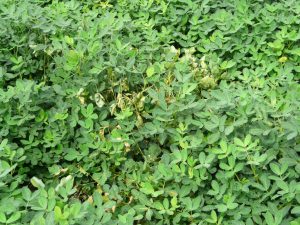
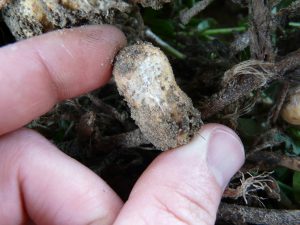
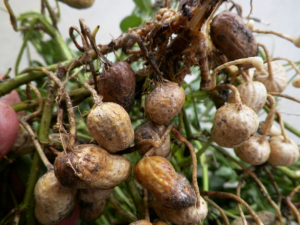
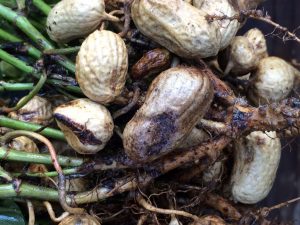
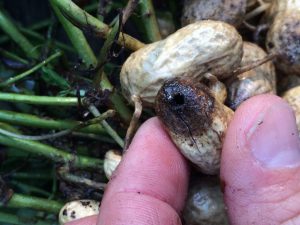
A few peanut fields have been treated for spider mites.
Spider mites in peanuts

I have seen some burrower bug damage on a few boiled peanuts from local fields this year.
Peanuts and Heat
Typically, peanuts begin blooming 35 days after planting. For some of the earlier planted peanuts they began blooming during June. For the later planted peanuts they entered the bloom stage during July.
Why does this matter? When max temperatures are 97 and above there is decline in pollination and seed set.
We had 3 days above 97 during June 2016 and 9 days over 97 in July 2016. Compared to the previous years, 0 days above 97 in July 2015 and only 1 day above 97 in July 2014. I can’t make an accurate guess on how much the temperature will impact pod set, but it is reasonable to assume the temperature will have some negative impact on yield. Hopefully, the impact won’t be much.
12Y still looks great.
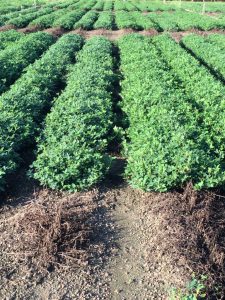
Anyone who says all boiled peanuts are the same has never had any of Mr. Joe Dubberly’s boiled peanuts. Somehow the salt is always perfect and he doesn’t mind sharing the peanuts.
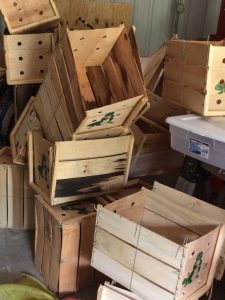
Foliar Blend Fertilizer Products
Like many other Extension Agents and specialists, I always get the question, “Does the foliar blended fertilizers work, or is it a waste of money?” Well, some of these things are coming on the market so fast that we can’t test them before they end up in a growers field. However, lets look at the NPK in one of these products.
One product that’s used by a fair amount of growers supplies 3.04 ounces of N, 1.76 ounces of P, and 3.94 ounces of K per acre if applied at the labeled rate. What would that look like if you simply used 10-10-10? In order to get 3.04 ounces of N it would take 1.9 lbs. of 10-10-10 or about this much per acre:
or this much:

That’s about 10-12 handfuls PER ACRE. Does anyone out there REALLY think 12 handfuls of fertilizer per acre will increase yield? I hope not, but if you do, at least make a wise purchase. To put this rate out of 10-10-10 costs about $.44 per acre (That’s 44 cents. Paying $6 or $7 per acre doesn’t seem like such a good price anymore, does it?). It would be nearly impossible to spread such a small amount, but the point is to shop around, read labels and purchase the best priced product. Water soluble 20-20-20 might actually be cheaper to use than some of the products I’ve looked at.
Should you give some of these materials a try on your farm? Sure. It’s fine to try some new things on the farm, but test them in a way that is actually true research. Treating half the field and not spraying the other half is NOT a true test and it doesn’t matter who tries to tell you it is. It’s NOT. At least 3 replicated treatments are needed to give you a true test. Of course, if they are replicated, all reps must be treated the exact same except for applying the product being tested in some reps. I had one gentleman tell me how well a product worked. He applied the product in a nitrogen mix on part of his cotton. He claimed it was replicated with treated and untreated areas. However, after I continued asking questions about the so called “research”, the part that was untreated didn’t receive the same sidedress nitrogen application until three weeks later. The timely nitrogen application is actually what increased the yield in the treated section, not the foliar blended material as he claimed. If this had been UGA Extension research it would’ve been tossed.
Just for humor
I was passing by the below peanut field with my wife. She looked at the field and looked back at me and said, “What’s wrong with that field. Why did they not spray it. It shouldn’t have all those weeds in it, should it?” I just smiled and said, “You’re smart and you listen. I have no idea about the weed control program in this field or why it obviously failed. My guess is it was not a recommended program. However, since you’re a math teacher tell me this: Each one of those weeds can produce at least 600,000 seeds. How many will be there next year?” She hasn’t given me the exact number yet.

